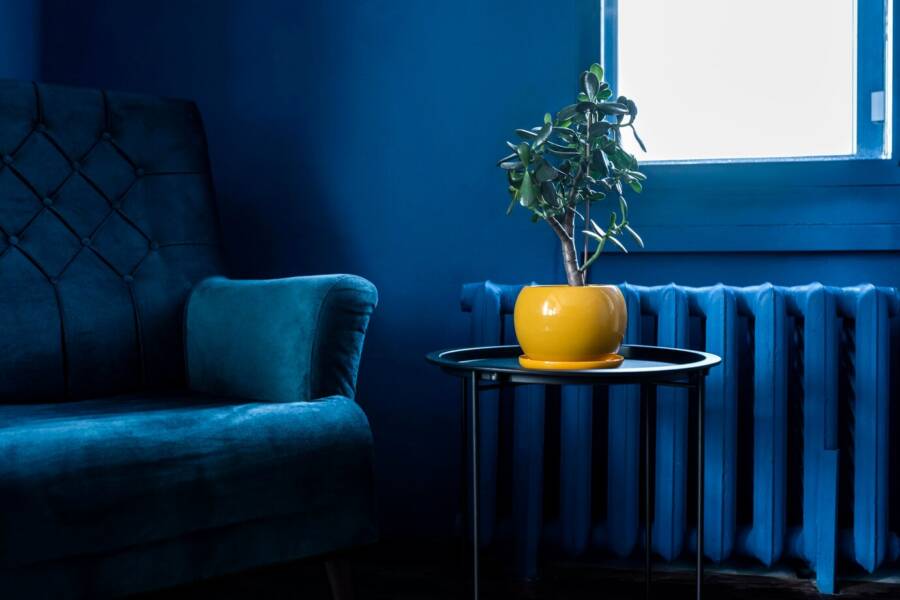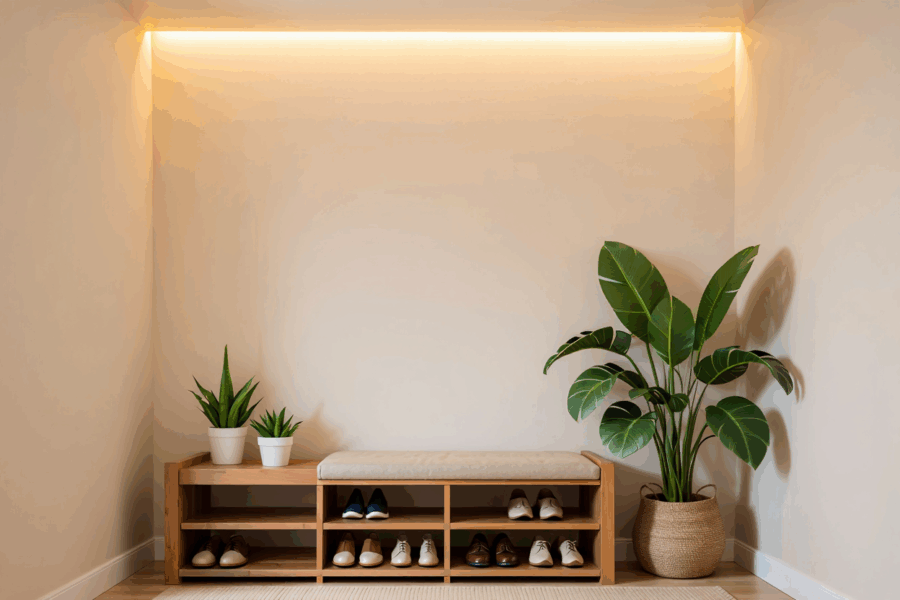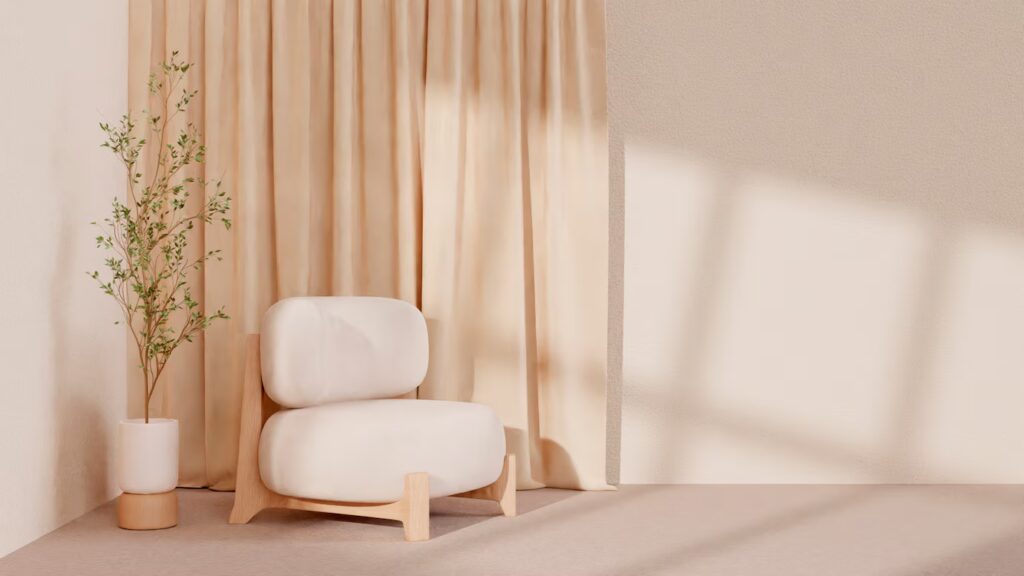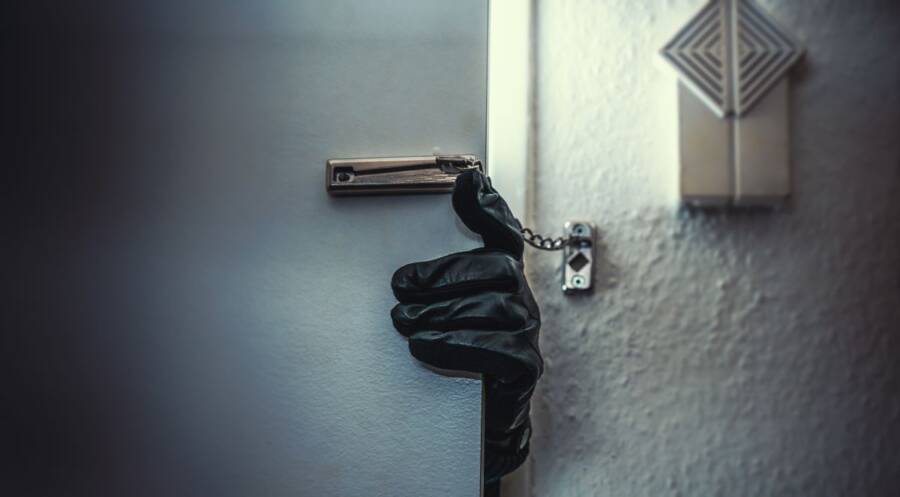Bees buzzing, blooms bursting—the beauty of bee balm is a delight to behold. A perennial flower beloved by bees and gardeners alike, bee balm stands tall among other summertime favorites.
Though its buds are often seen throughout the late spring and early summer months, when does bee balm bloom? To answer this question, we must delve into the secrets of Mother Nature’s magical cycle.
Here’s the Answer When Does Bee Balm Bloom?
Bee balm blooms in mid-to-late summer, usually from July to September. The flowers are usually 2-3 inches wide and come in colors such as white, pink, red, lavender, and purple. To ensure optimum flowering potential, plant Bee Balm in a spot that receives full sun and regular moisture.
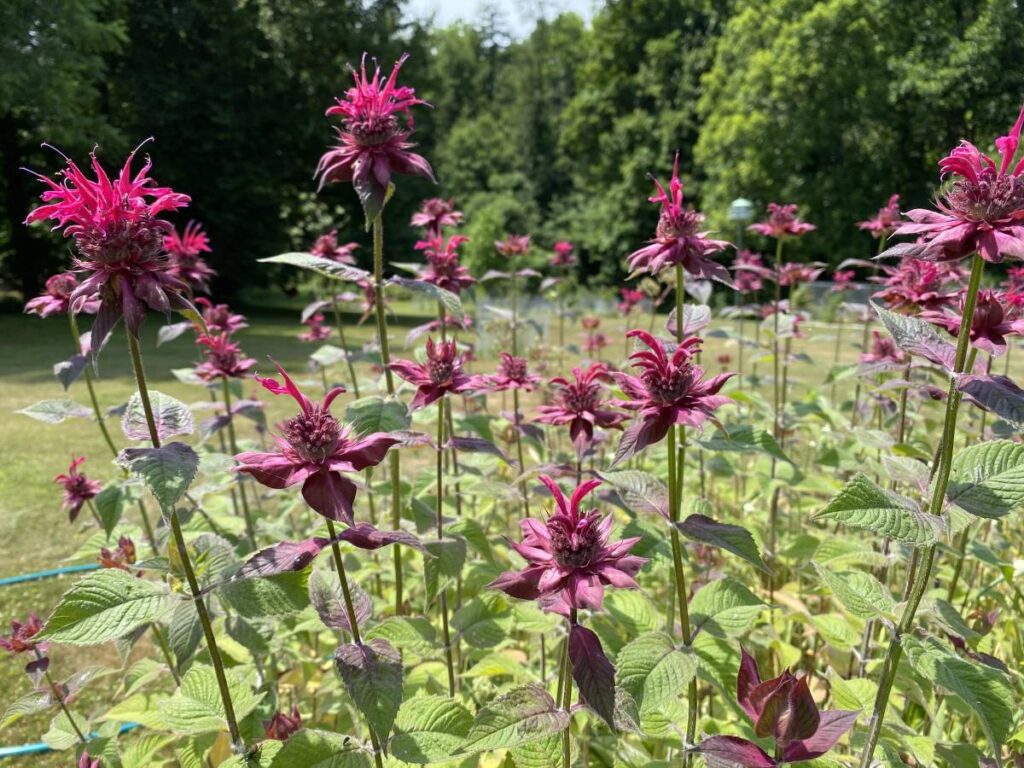
What Is Bee Balm?
Bee balm is a fragrant, flowering herb that brings splashes of color to any garden. It’s like a beacon for pollinators, and bees in particular love it! But what exactly is bee balm? Let’s take an aromatic journey into the world of this remarkable plant.
Native to North America, bee balm (Monarda didyma) grows as a perennial in most parts of the continent. Its bright flowers come in shades of red, pink, purple, and white, and its unique shape makes it easy to identify when out on nature walks or tending your own patch.
The leaves are known to have antiseptic properties, which makes them great for treating insect bites or even fever blisters. Not only this, but they also provide plenty of food and nectar for many species of wildlife too!
If you’re looking to add some vibrant color to your garden, look no further than bee balm. With its beauty come lots of benefits for both us humans and our environment alike. Now let’s explore another aspect of this wonderful flower: When does bee balm bloom?
When Does Bee Balm Bloom?
We often assume that all plants have the same bloom time each year, but is this really true? With bee balm, we can find out. So when does it actually bloom?
When it comes to bee balm, the bloom time depends on several factors, including your local climate and soil type. Generally speaking, these plants will begin blooming in late spring or early summer across most of their range; however, they may start flowering as early as May in warmer climates such as the south-eastern United States.
The flower stalks can reach up to 3 feet tall and can be quite impressive when in full bloom. To make sure you don’t miss out on seeing them at their best, consider planting additional bee balm varieties so that there will always be something in bloom throughout the season.
Knowing when a bee balm plant is about to bloom can help gardeners plan their gardens accordingly and ensure they enjoy vibrant blooms from late spring through mid-summer every year.
How Can You Tell When a Bee Balm Plant Is Going to Bloom?
It’s often wondered whether bee balm plants are able to bloom more than once. But before we can answer that question, let’s take a closer look at how you can tell when a bee balm plant is about to bloom.
The first signs of blooming usually come in the form of flower buds – these will appear from mid-to-late summer and will be an indication that full bloom isn’t too far away.
After this period has passed, it’ll become clear what kind of season the bee balm plant is going to have; if there are lots of flowers appearing, then you’re likely looking at a long bloom season ahead! That said, if your bee balm doesn’t seem to be showing any signs of flowering life after the initial bud stage, then chances are that its bloom time won’t last for very long.
So whilst it’s possible for some species of bee balms to produce multiple blooms throughout the year, it all depends on just how many flower buds appeared during those early stages.
Does Bee Balm Bloom More than Once?
Bee balm is a beautiful plant with many uses, and one of its main attractions lies in its fragrant blooms. So it’s no surprise that gardeners want to know if they can enjoy these flowers more than once. Fortunately, the answer is yes! By dividing your bee balm plants when they become overcrowded, you’ll encourage them to put out fresh growth and continue flowering throughout the summer months.
Deadheading the spent blossoms will also help keep bee balm going for longer, as this encourages further buds and helps prevent self-seeding. If done correctly, you should be able to enjoy their delicate pinkish-purple petals until early autumn.
To ensure maximum bloom time from your Bee Balms, divide them regularly and deadhead frequently – then sit back and revel in their beauty all season long!
What Time of Year Does Bee Balm Bloom?
Bee balm is a delightful perennial flower that blooms in late summer. It’s easy to spot with its bright red petals, and the leaves of this plant have a minty scent when crushed. This herbaceous beauty usually starts flowering around mid-July, but depending on where you live, it can bloom until early September.
The best way to know exactly when your bee balm will be blooming is to observe how far along the buds are progressing throughout the season. Once they start showing their vibrant colors, you know your red bee balm should begin flowering soon afterwards!
If you notice that your plants aren’t producing any flowers, there could be an underlying issue causing them not to bloom; we’ll discuss why in more detail later on.
TIP: Keep track of your bee balm’s growth by taking pictures or making notes as the buds start coming in during late summer; this way you won’t miss out on seeing these pretty little flowers come into full bloom!
Why Is My Bee Balm Not Flowering?
If your bee balm isn’t flowering, there could be a few reasons why. First, it may not have enough light or air circulation. Bee balm is a member of the mint family and likes partial shade as well as good air circulation to grow well.
Additionally, if you haven’t repotted your bee balm plant in a while, that can affect flower color. Dividing bee balm every three years can help keep it healthy.
The other reason why your bee balm doesn’t bloom might be the variety you are growing. There are many types of varieties available; some, like lemon bee balms, will only produce flowers in the early spring or summer months when temperatures are warmer.
It’s also worth noting that native bees love this plant so much that they sometimes sting its purple flowers!
If you’re having trouble with powdery mildew on your bee balm, encourage the plant to spread out by dividing it instead of treating it with fungicides. Just make sure to give it plenty of space so there is good air circulation around each section.
Overall, whether you want to treat bee stings or simply enjoy vibrant flowers in your garden, bee balm is an easy-to-grow perennial that will provide beautiful blooms year after year—but only if given the right conditions!
How Many Years Does It Take for Bee Balm to Bloom?
While bee balm blooms quite reliably from the second year on, it takes patience for these plants to reach maturity. The bloom time of bee balm will depend on when you planted them; if they were seeded or sown early in the springtime, then they might take up to two years before they flower.
In some cases, such as when planting scarlet bee balm after midsummer, flowering can be delayed until the following season. If you have recently transplanted your bee balm outdoors, give it at least one full growing season before expecting it to bloom.
TIP: To ensure that your bee balm grows well and blooms profusely every year, start by giving them plenty of sunlight and soil rich in organic matter; this gives them all the nutrients they need to thrive!
What Kinds of Bee Balm Bloom?
There are many different types that come in various colors and sizes, depending on the specific type you choose to grow. Some varieties might have pink flowers while others may have white or even purple blooms—all of which contribute to an impressive display in the garden.
The most common type for gardens is Monarda didyma, commonly referred to as Oswego Tea or Bergamot, which produces vibrant red blossoms with dark green foliage. Other popular choices include “Marshall’s Delight” (white-pink), “Jacob Kline” (deep pink), and “Gardenview Scarlet” (scarlet).
All these varieties of bee balm will bloom from early summer through the fall if given enough sunlight. To ensure maximum growth and flower production, make sure to fertilize your plants every couple weeks during their active growing season.
When it comes to deciding what kind of bee balm you want in your garden, be sure to consider not only its color but also its height and spread. Planting them too close together can lead to overcrowding and disease problems, so be mindful when picking out your varietals!
Additionally, there are some hybridized cultivars available that offer improved characteristics, such as increased resistance to powdery mildew or larger blossom size, giving you more options for creating a stunningly diverse landscape.
Will Bee Balm Bloom Again if I Cut It Back?
It’s natural to wonder if you can get a second bloom from the same bee balm plant. After all, we’re used to annuals that will flower again every year when cut back after their first flowering period.
Unfortunately for us gardeners, most varieties of bee balm are perennials and don’t respond well to being cut back in this way. Cutting them down won’t lead to another round of blooms; instead, they’ll just die off completely!
Still, there is a way around it: deadheading the flowers as they fade away. Deadheading simply means cutting off the fading blossoms before they set seed so that energy isn’t wasted on producing more seeds and instead goes into forming new buds and blooms. This works especially well with taller varieties such as monarda didyma – also known as red bergamot or Oswego tea – which produce an abundance of fragrant tubular-shaped flowers throughout summer that make lovely cut flowers too.
So while your bee balms may not give you two rounds of blooms each season, regular deadheading should ensure plenty of colourful displays in your garden over time!
How Do You Care for a Bee Balm Plant?
Take the example of my friend, who recently bought bee balm plants to create a vibrant oasis in her garden. To get the best out of your bee balm plant, you need to know how to care for it properly.
Caring for a bee balm is relatively straightforward and doesn’t take much effort once established. During its first growing season, water regularly, especially if there are periods of drought or extreme heat.
Plant in an area with full sun or partial shade and prepare soil that is rich and well-draining; mulch around each plant will help conserve moisture levels as well as suppress weeds. In early spring, feed plants with an all purpose fertilizer, such as 10-10-10 NPK formula, every 2 weeks until midsummer.
Prune back stems after flowering and remove any dead leaves or flower heads throughout the growing season. This helps encourage new growth and keep your bee balm looking its best!
Bee Balm isn’t fussy when it comes to pests and diseases, but watch out for powdery mildew, which can be prevented by ensuring good air circulation around plants—this also applies to other types of Monarda too.
With regular watering, feeding, pruning, and weeding, you’ll soon have a thriving bee balm patch that brings color and beauty to your outdoor space year after year!
What Is the Best Way to Plant Bee Balm?
Nostalgia filled me as I reminisced about my first attempt to plant bee balm. It’s a beautiful, fragrant flower that can be used to add color and scent to any outdoor space—the perfect addition for my garden!
Here are some tips on how to sow and care for your own bee balm plants so you can enjoy them too.
When it comes to planting bee balm, where they’re situated is key. They should be placed in well-draining soil with plenty of sun exposure. If possible, incorporate compost or other organic matter into the area before planting, as this will help promote healthy root growth. Water regularly but avoid overwatering; this could cause the roots to rot and kill the plant.
When ready, dig a hole twice as wide and slightly deeper than the pot containing your bee balm seedling. Gently remove from its pot and place in the prepared hole – backfilling around it with soil until firmly secured. At this point, water thoroughly again to ensure everything settles nicely—one final step towards creating yourself an exquisite floral display!
Bee balms are pretty hardy so long as they receive adequate amounts of light, air circulation, and water while also being protected from extreme temperatures; ensuring these conditions during their growth cycle will go a long way in keeping your plants healthy and vibrant year after year.
What Are the Most Common Pests and Diseases of Bee Balm?
With any plant, it’s important to know what pests and diseases may affect it in order to keep your bee balm flourishing year-round.
Common problems affecting bee balm include:
- Powdery mildew – this fungal disease forms a white powder on the foliage of plants;
- Aphids – these small green insects feed on juices from the leaves, causing them to curl up;
- Rust – yellowish spots appear on both sides of leaves due to rust fungi spores.
Fortunately, there are some easy steps you can take to prevent or treat these common issues.
Regularly removing dead or damaged parts of the plant helps reduce fungal infection, while spraying water gently over affected areas every few days will help remove aphids. For rust, using an appropriate fungicide should do the trick.
Keeping an eye out for signs of trouble early and taking action quickly makes all the difference when it comes to keeping your bee balm healthy and happy!
Conclusion
When it comes to bee balm, the good news is that this beneficial plant blooms beautifully and is fairly easy to maintain. With the right conditions, such as full sun and moist soil, bee balm will provide beautiful blooms throughout the summer season.
Having bee balm in your garden can attract butterflies and bees while providing a pleasing aesthetic appeal. As long as you take proper care of bee balm, you’ll be sure to enjoy its beauty for many years to come.

